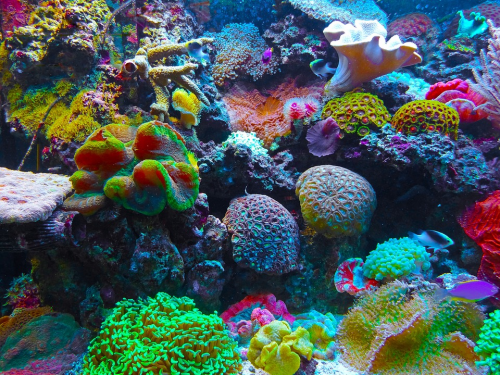Image courtesy of Pixabay.
If you have ever watched Finding Nemo or listened to an aquarium guide, you know that coral reefs are the teeming metropolises of the ocean. Despite accounting for less than one percent of the seabed, they provide a home for a quarter of all marine species. Ten years ago, conservationists and news outlets alike were quick to sound the alarm when a series of high-profile papers from 2009 to 2014 found that ocean acidification—caused by increasing atmosphericcarbon dioxide (CO2), with which water reacts chemically to produce acid—was disrupting the behavior and sensory mechanisms of coral reef fish. Among the reported impairments were hearing, vision, olfaction, activity levels, and even response to predator cues. However, when a team of researchers from Australia, Canada, Norway, and Sweden put these results to the test in a replication study, they found the effects simply could not be reproduced. Their results, published recently in Nature, have important implications for how we understand coral reef health in the future.
In their comprehensive three-year examination, the team took great pains to recreate the conditions of the original studies. The species and life stages of the fish, as well as the locations and seasons they were studied in, all matched those of the earlier studies referenced. The researchers even employed automated tracking software to minimize biased reporting and made all of their raw data and code publicly available.
Perhaps the most surprising result reported in previous papers was an extreme reversal of chemical cue preferences: earlier studies alarmingly reported that fish exposed to elevated levels of CO2 chose to spend more than ninety percent of their time in water containing predator cues. Across 560 individuals, the replication study found no replicable effect in any species or age group. It also demonstrated that exposure to high CO2 did not cause significant elevation in activity levels or changes in behavioral lateralization—directional bias when making turns.
Suspecting that the lower sample sizes of the earlier studies might explain their different results, the team even went a step further with a bootstrapping simulation, a statistical analysis technique in which they took thousands of subsets of their vast dataset to simulate the smaller four-minute trials of the earlier studies. Out of 10,000 simulations, not one matched the extreme results reported previously.
In retrospect, there were several red flags with the earlier studies. Although the researchers used similar methods and reported remarkably low variance, there were often discrepancies between papers on the actual data. “I have never seen such strong treatment effects and such reported consistency in behavior… it is hard to believe,” said Josefin Sundin, one of the study’s coauthors and behavioral ecologist of the Swedish University of Agricultural Sciences.
The team’s original goal was quite different: “We wanted to look at the physiology behind those reported effects,” Sundin said. “But in order to do that you have to repeat the effects. If you fail to replicate it, what do you do? Do you still try to publish?” These questions relate to a perennial issue in the scientific community: the unpopularity and lack of platform for negative, or null, results. Because these findings are usually viewed as dull or unsurprising, even high-quality studies with large sample sizes are often left unpublished when they conclude a null effect. However, such results are crucial for developing well-informed strategies moving forward. “Mostly we are happy that such a high-impact journal was willing to publish negative results and replications,” Sundin said.
Ultimately, these coral reef revelations underscore the need for comprehensive and independent replication studies in the scientific community, especially on issues of global importance. The negative results of this study, for instance, will shift the way we approach the essential task of coral reef protection. Reefs already face grave threats from human activities such as habitat destruction, and ocean acidification still wreaks devastation on them through coral bleaching, which kills off essential energy-providing algae colonies. Most current management strategies for ocean acidification prioritize “natural refugia”—habitats more naturally resistant to stressors, such as reefs with carbonate-rich deposits and CO2-dissolving seagrass. The results of this study suggest that conservationists need not worry about local fish species at those locations; in the bigger picture, this study challenges well-accepted precedent, challenging us to rethink and reassess how coral reefs and the species they harbor are affected by environmental change.
Sources:
Clark, T.D., Raby, G.D., Roche, D.G. et al. Ocean acidification does not impair the behaviour of coral reef fishes. Nature 577, 370–375 (2020). https://doi.org/10.1038/s41586-019-1903-y
(2015, Aug 3). Effects of Increasing CO2 Levels on Coral Reefs. AZO Cleantech. Retrieved from https://www.azocleantech.com/article.aspx?ArticleID=566.

